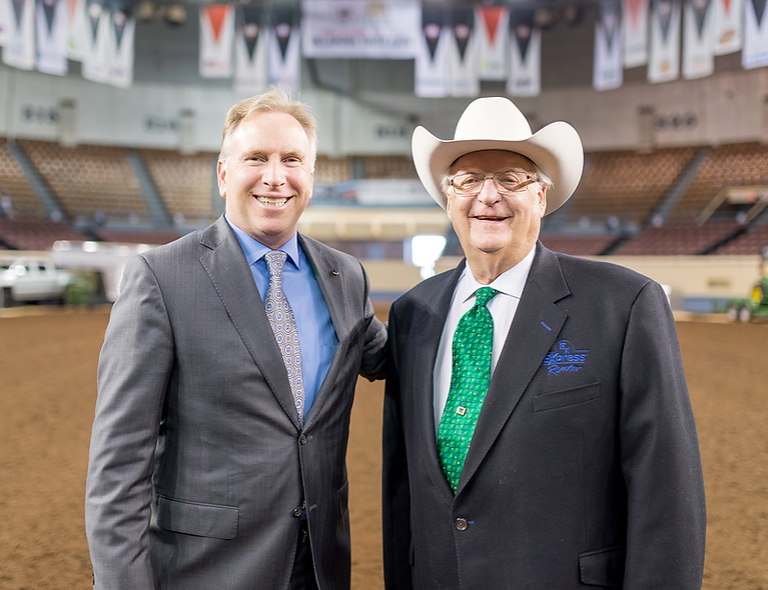9 Secret Ingredients of a High-Impact Fundraising Campaign
- Craig Clemons

- Sep 1
- 6 min read

The Clemons-Associates team has built some amazing campaigns over the last 25 years serving 40+ clients comprising of nonprofits, educational institutions and ministries. See sampling here.
When you seek to raise $10M to $300M in a major gift campaign OR incease your sustainable annual giving , it is mission critical to adopt, adapt and execute key elements for a high success rate. In this blog, we aim to share those secret ingredients. Read on.
#1: Powerful Storytelling

Not surprising, right?
Every consultant, donor or collaborative partner you’ve ever engaged likely starts the relationship by asking ‘what’s your story’? Compelling stories often make the difference between a potential supporter scrolling past your campaign and deciding to support it. Stories that resonate emotionally and align with your mission give your audience a reason to care – and a reason to give.
When crafting your story, ask yourself:
How did your organization come to be?
Who do you serve and why does it matter?
How are lives impacted through your programs?
What challenges are you working to solve?
What KPIs does your organization use to measure progress?

BONUS TIP:
Augment your storytelling efforts through a) testimonials; b) case studies; c) donor endorsements; d) SME endorsements; e) community impact. Highlighting your organization’s accomplishments (impact) will make it easier for donors to see how their support will make a tangible difference.

#2: Realistic Fundraising Goals

When we designed fundraising goals to fund/build a new, debt-free stadium in Division One Collegiate athletics, every element was scrutinized in pre-campaign execution. Setting a fundraising goal is more than choosing a target dollar amount, it’s about building a strategy to educate stakeholders, motivate your team, tie into your campaign, inspire givers and steward your supporters. A well-defined goal brings clarity and focus, helping you prioritize efforts and allocate resources effectively.
Start by defining:
Elements that need the most funding
How the funds will be used
The Case for Support
Prospective donors (and prospective influencers)
Prospective volunteers (eg Campaign Committee)
Prospective partners
Your timeline for reaching the goal
To set goals that truly bring your mission forward, they must be realistic and align with your organization’s size, resources, donor base, and staff capacity. Your goal will also influence the type of fundraising campaign you launch – whether it’s a short-term initiative, capital campaign, endowment campaign or recurring giving focus.
Use the SMART goal framework to ensure your objectives are specific, measurable, achievable, relevant, and time-bound. This approach will help clarify your path to success and build trust with donors by showing transparency and accountability.
#3: Case for Support

Also known as a case statement or business case, a case for support for a major gift campaign is a clear and compelling set of ideas that literally make the case for why donors should give to your major gift campaign. It outlines the needs, nature, and benefits of your nonprofit's intended outcomes (in other words, it compelling answers how raised funds impact lives). This document should incorporate the nonprofit's mission, vision and values and seek to make a connection between your organization and the reader (prospective supporter).
As you dig into developing your case, think of the below six elements as six distinct questions your case must answer.
Context: What story are we in?
What is going on in the world or community that makes an organization like yours necessary? What problem do you address? What solutions/programs have been tested and proven?
Impetus: Why now?
What makes your mission, campaign, or project urgent instead of just “nice to have?” What element of your story creates excitement, a sense of moment and urgency?
Vision: What will be different?
How will the world look as a result of your organization’s successful work (and the donor’s gift)? What’s the before and after? By way of major gift campaign success, how are lives positively impacted?
Plan: What will we do with your gift?
What projects will be funded? What will dollars be used for? What impact will they generate? The Plan element conveys programmatic substance; it shares details which peaks the prospect’s interest and exudes confidence that their gift will make a tangible difference.
Credential: Why us?
Don’t simply rattle off your superlatives, longevity, legacy of impact, founder’s bios, etc.—focus on what makes your platform exceptional. People don’t give just because you’re good; they give because you have passionate SME’s who have developed, executed impactful programs which effectively change lives. They give to scale what already works.
Appeal: What are we asking the audience to do?
This is the ask, and while it can be quite simple, it’s worth appreciating that there are many ways to frame it, and each casts the donor in a different role. Are we asking them to get involved? Support their values? Give back? Pay it forward? The main thing donors “get” in exchange for their giving (beyond recognition tchotchkes) is the story they get to tell themselves about themselves, and the Appeal in your case suggests what that story can be.


BONUS TIP:
Once you’ve done the work of defining the six elements of your case for support, you’re ready to leverage them in your communications plan. But remember, you don’t always need to use all of them in every donor communication.
For a significant major gift solicitation or proposal or grant proposal, you probably need all six. But outside of that, if you are cultivating and communicating with your prospects over time, you have multiple opportunities to build their understanding of your six elements. You could even imagine a multi-part series of communications that takes one or two elements at a time, culminating in an ask. The key is to communicate all six along the way to solicitation, whatever that path looks like.
#4: Targeted Donor Outreach

It’s a good idea to customize your outreach strategy with donor segments in mind. Sending the same email to your entire donor base may save you time, but it won’t be nearly as effective in driving tailored engagement as sending personalized, targeted communication to different donor segments. To create more meaningful connections, consider segmenting donors by:
Giving history
Engagement frequency
Average donation size
Programmatic interests
Tailored outreach leads to deeper relationships. Sending your message to groups based on similar giving habits increases the chance that your ask will resonate and result in action. Personalization doesn’t just drive better short-term results—it also makes donors feel seen and understood, increasing their likelihood to engage with your ask and stay connected to your mission over the long term.
#5: Clear Calls to Action

When it comes to fundraising, every communication you send has one goal: to inspire your supporters to act. While it’s important to share on social channels, it’s essential to include a strong call-to-action (CTA) on your fundraising site, your blog, your e-newsletter and more. Your CTA is what turns interest into impact.
For example, here are a few CTA ideas to include in your campaign:
Watch Video
Donate Now
Contact Us
Start a Fundraising Team
Become A Volunteer
Attend Upcoming Gala
As clarity drives conversions, be sure your CTAs are branded; ensure they stand out with special colors and fonts. Your goal is to reinforce the urgency in your campaign and communicate exactly how supporters can help advance your mission. The easier you make it to act, the more likely people are to engage, give, and share.
#6: Donor Recognition and Appreciation

What the Clemons-Associates team calls stewardship is often the least developed element in building a high-impact fundraising campaign. If you do not understand the ‘7 touches’ mantra in this space, reach out to one of our team members or visit one of our blogs. Sending a “Thank You” doesn’t complete your obligation in this area; there are tons of creative ways to recognize, reward and express appreciation for a donor’s gift. Creative and timely recognition and appreciation go a long way in fostering a sense of community and deepening donor loyalty. Some stewardship elements in 2026 stand the test of time:
Share videos from beneficiaries expressing their gratitude
Gift branded merchandise with a personal note from an impacted constituent
Invite donors to appreciation lunches
Invite donors to ‘insider’ experiences which show them behind the scenes activities (how you’re impacting lives)
Feature top donors on your branded digital assets

BONUS TIP: For first-time or smaller donors, consider sending them a welcome package to acknowledge their contribution to your mission. For long-term and significant supporters, consider creating a donor hall of fame or giving society to feature them with plaques to honor their ongoing impact.
The key to donor appreciation is creativity and consistency. Recognize donors during your campaign, whether it be through board member advocacy, social media shout-outs, or real-time acknowledgements. Gratitude goes a long way—donors want to feel seen, valued, and part of something meaningful.
While this is a straight forward post noting some best practices and key takeaways,

consider engaging Clemons-Associates for advanced consultative services. Our team has helped organizations from Dallas to South Korea. We fully understand and are happy to share the Secret Ingredients of a High-Impact Fundraising Campaign. We leverage best practice campaigns bringing out the best of an organization's impact for amazing results.
Want to hear from our former customers? See what our clients have to say.
Click here.

Craig Clemons with Friend, Philanthropist and President/Founder/Board Chairman of Express Employment Professionals, the late Bob Funk, Sr.
Seeking expert assistance from seasoned professionals?
Contact Craig Clemons at craig@clemons-associates.com or one of our rock star associates for more details. Clemons & Associates is on standby to help you with brand identity, strategic messaging, campaigns, digital assets, programs/projects and/or development endeavors.



